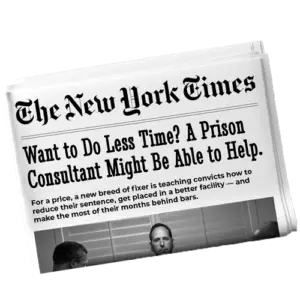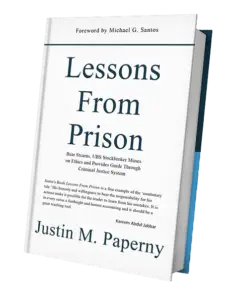(Click the Play button to listen to the whole podcast.)
I got a call recently from a physician back east. He’s facing sentencing next week, and the way he asked his question told me everything. “I asked my lawyer for a draft of my sentencing memorandum, and he reluctantly shared it. Is that bad?”
Yes, it’s bad.
The sentencing memorandum is supposed to showcase your mitigation. It should reflect the work you’ve done since becoming a defendant—proof that you’ve acted, learned, and built something. Judges tell us this over and over. Judge Nancy Gertner said a rehabilitation plan matters, and even more if you’ve already started it before sentencing. If you’ve done the work, it should be in the memorandum, in the probation report, everywhere. If you haven’t, you can’t reasonably ask for leniency.
That physician had regret. Three years had passed, sentencing was days away, and there was no record of progress. Contrast that with someone else in our community—David Moulder. His story illustrates what happens when you stop waiting for your lawyer to lead and start creating assets that influence stakeholders.
David was from Minnesota. His lawyer dismissed mitigation entirely. “This is why you hired me,” the lawyer said. He refused to collaborate. That didn’t stop David. He started on his own.
His turning point came when he saw Michael Santos featured on the Bureau of Prisons website. Michael served 26 years and built a body of work so strong that the BOP now distributes it nationwide through First Step Act programs. David dug deeper. He watched our judge interviews. Judge Bough’s words stuck with him: “If you break my window, don’t tell me you’re sorry. Tell me how you’re going to fix it.”
David admitted: “I’m not fixing the window.” Then he called us.
The first step was a life story, written not as a data dump but as the foundation of a longer narrative—think sequels, Godfather I and II. That story went into the probation report. Judges like Bennett have said they’d be “astoundingly impressed” if a defendant did that. David did it.
Then he built outward. He volunteered with our nonprofit, reaching over a million people in prison through our programs. That’s macro-level influence. He also spoke at the USC Marshall School of Business—50 students in a classroom, learning from his mistakes. That’s micro-level influence. Both mattered. Both showed he wasn’t waiting for a sentencing date to define him.
David also paid $1.2 million in restitution but didn’t use it as the centerpiece. That was for the lawyer to present. His focus was on what only he could create: service, reflection, documentation, proof.
When sentencing came, Judge Tunheim opened by noting what David had created. Against guidelines of 48–60 months, he sentenced David to 12 months probation and 21 days in county jail. Later, USC adopted David’s book, The Ethical Edge: A Guide to Responsible Decision Making, as a teaching tool.
That’s the hidden advantage: influence at every level. A million people inside prison. Fifty students in a classroom. A probation officer with a new view. A judge with more than just the government’s version.
The takeaway is simple: whether your lawyer supports you or not, you can create influence. If you don’t, you leave the field to the government. If you do, you give judges and probation officers something real to cite.
The question is: who are you influencing right now—and how will that influence show up at your sentencing?
Justin Paperny



